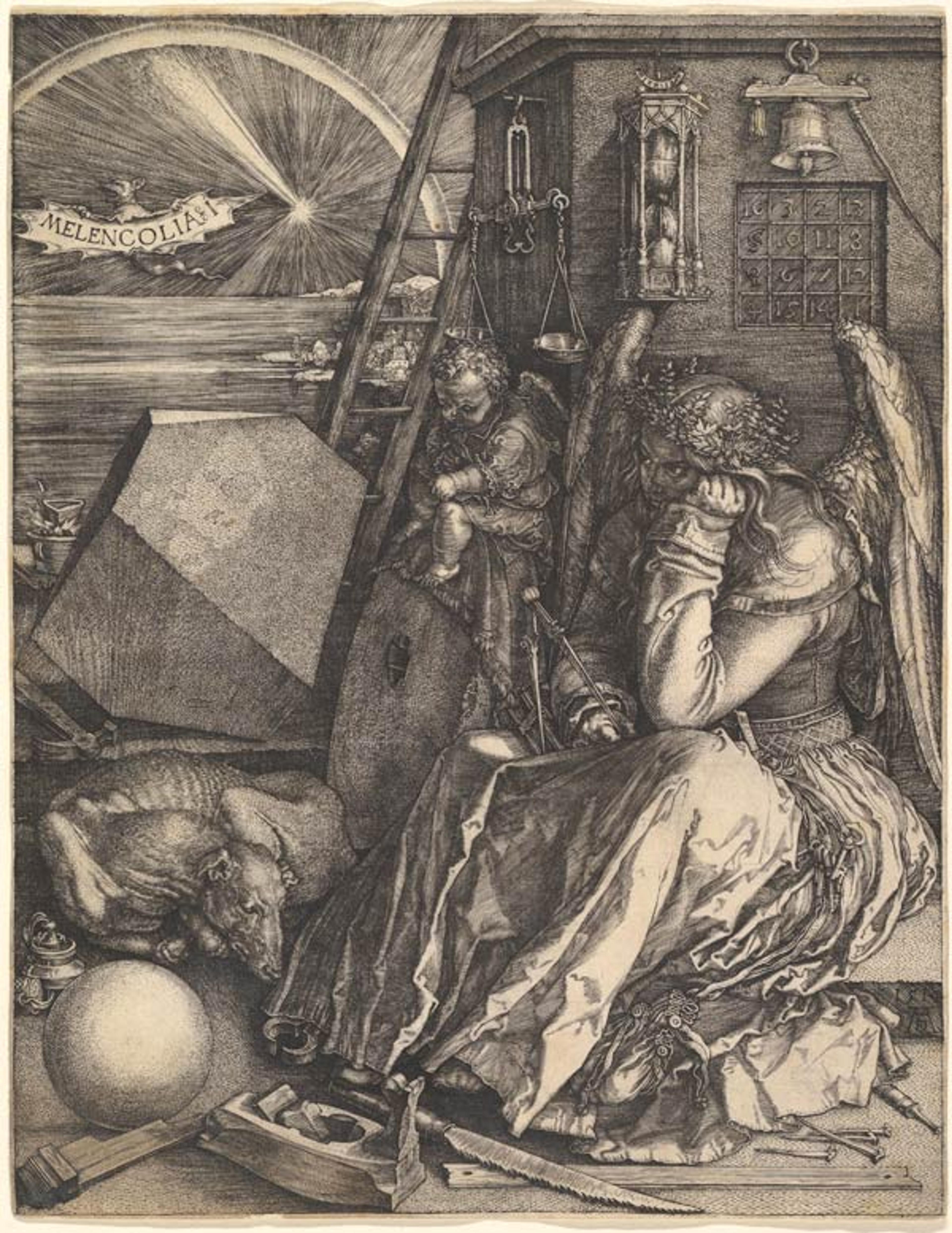
Albrecht Dürer (German, 1471–1528). Melencolia I, 1514. Engraving. The Metropolitan Museum of Art, New York, Harris Brisbane Dick Fund, 1943 (43.106.1)
«The year 2014 marks the five-hundredth anniversary of Albrecht Dürer's Melencolia I (1514), a masterpiece of engraving whose imagery has fascinated artists, historians, scientists, and mathematicians for centuries. In honor of this occasion, a small display of Melencolia and several works it influenced is on view through July 14 in the Robert Wood Johnson Jr. Gallery.»
Melencolia shows a winged personification of Melancholy, who is seated dejectedly with her head resting on her hand. She holds a caliper and is surrounded by other tools and assorted objects associated with geometry, the one of the seven liberal arts that underlies artistic creation. On the wall behind her appears a numbered magic square in which each row and column add up to thirty-four. Beside her, a putto sits on a millstone while writing on a tablet. A comet punctures the sky in the background.
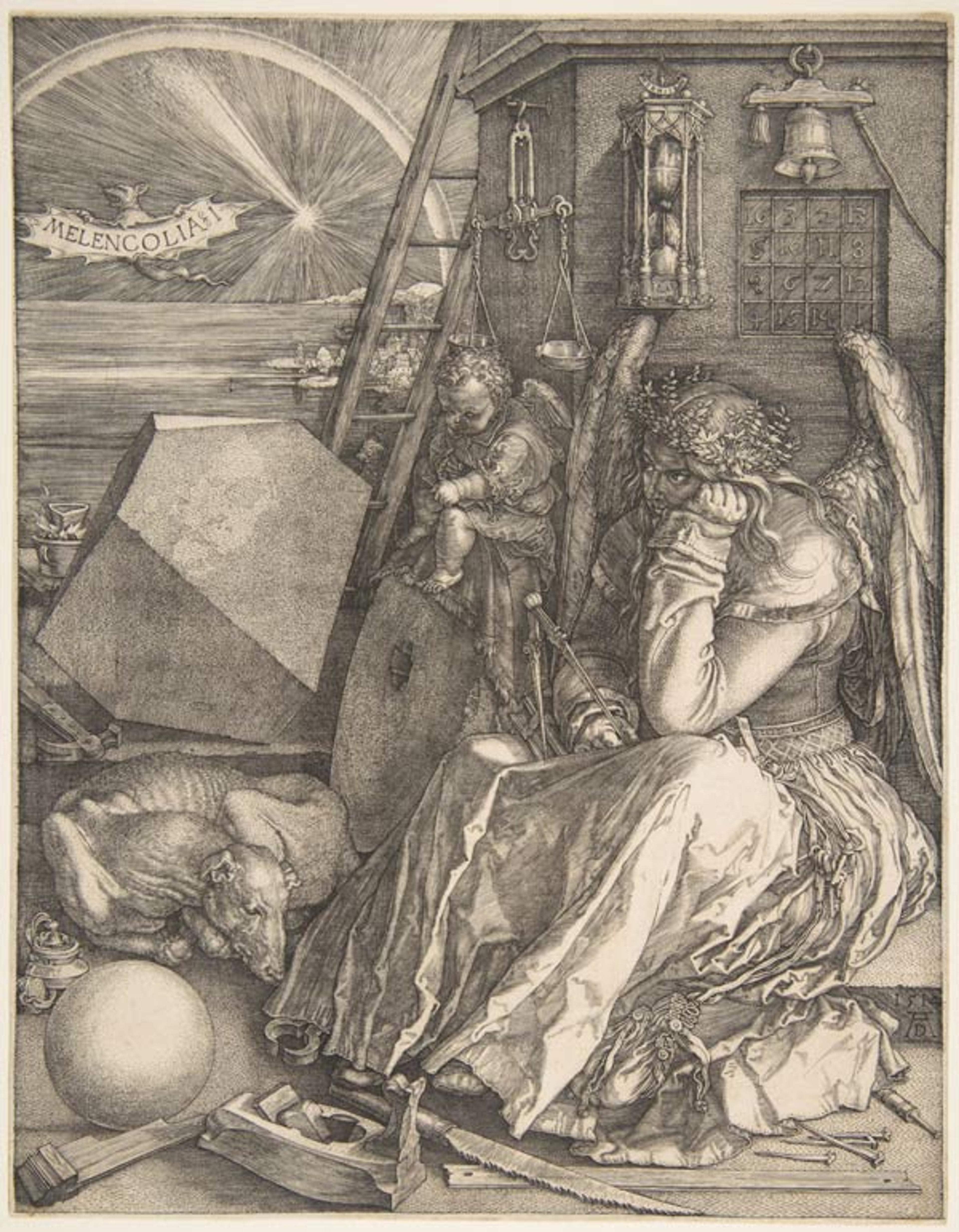
Albrecht Dürer (German, 1471–1528), Melencolia I, 1514. Engraving. The Metropolitan Museum of Art, New York, Anonymous Gift, 2003 (2003.446.1)
In medieval philosophy, each individual was thought to be dominated by one of the four humors; melancholy, associated with black gall and the god Saturn, was the least desirable of the four, and melancholics were considered the most likely to succumb to insanity. Saturn was associated with work in stone or wood, agriculture, and geometry. Renaissance thought also linked melancholy with creative genius. Melencolia I is a depiction of the intellectual situation of the artist and is thus considered, by extension, a spiritual self-portrait of Dürer. Melencolia is one of three similarly sized large prints of 1513 and 1514, known since the nineteenth century as Dürer's Meisterstiche (master engravings). The three in no way constitute a series, but they do correspond to the three kinds of virtue in medieval scholasticism—moral, theological, and intellectual—and they embody the complexity of Dürer's thought and that of his age.
Melencolia's interweaving of complex iconography is outstanding, but the print also dazzles on a purely artistic level. By merely varying black lines printed on white paper, Dürer rendered a remarkable array of textures—the dog's fur, Melancholy's dress, the stone face of the large polyhedron—and created many shades of gray through the image. The numerous details are also remarkable, most notably the still life of woodworking tools in the foreground.
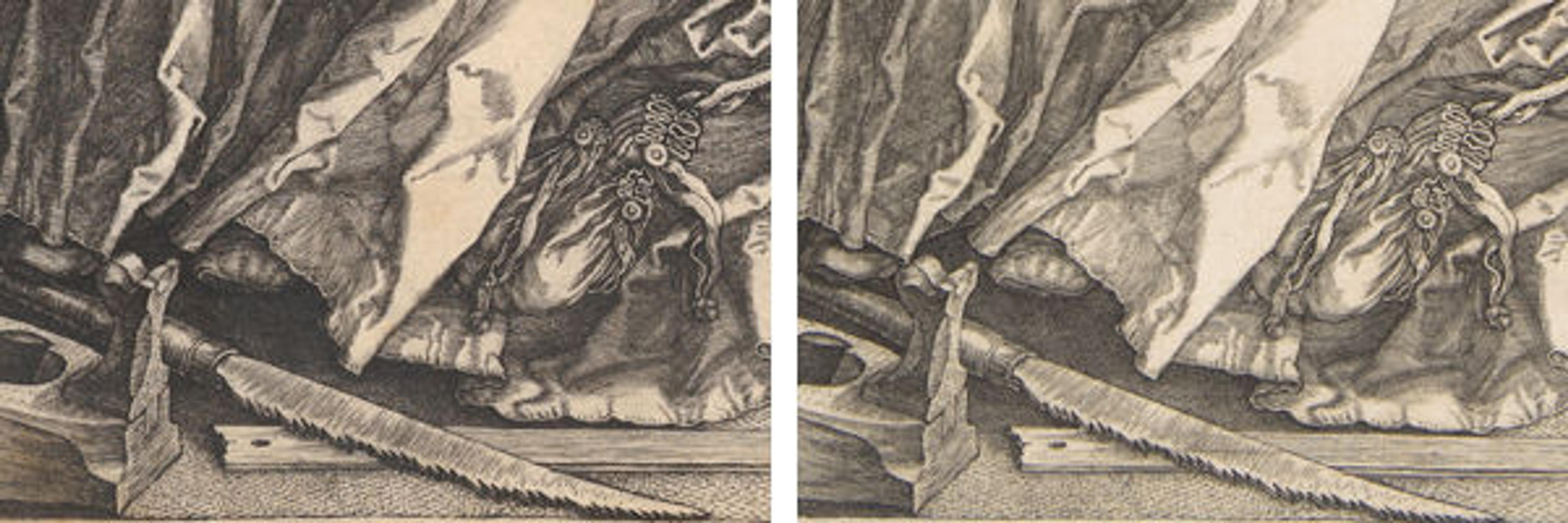
Left: Dürer, Melencolia I (detail), 43.106.1. Right: Dürer, Melencolia I (detail), 2003.446.1
Two impressions of the print, one produced early in the run of printing and the lighter one somewhat later, illustrate the difference in impressions produced as the printing plate was repeatedly sent through the press. One indication that the lighter impression was printed later, as the printing plate began to wear down, is that the finer lines that describe the surfaces and textures are somewhat fainter than in the earlier impression. Another sign is that in the lighter impression, a strong horizontal scratch appears on the saw in the center foreground, a mark in the printing plate that occurred slightly later in the printing.
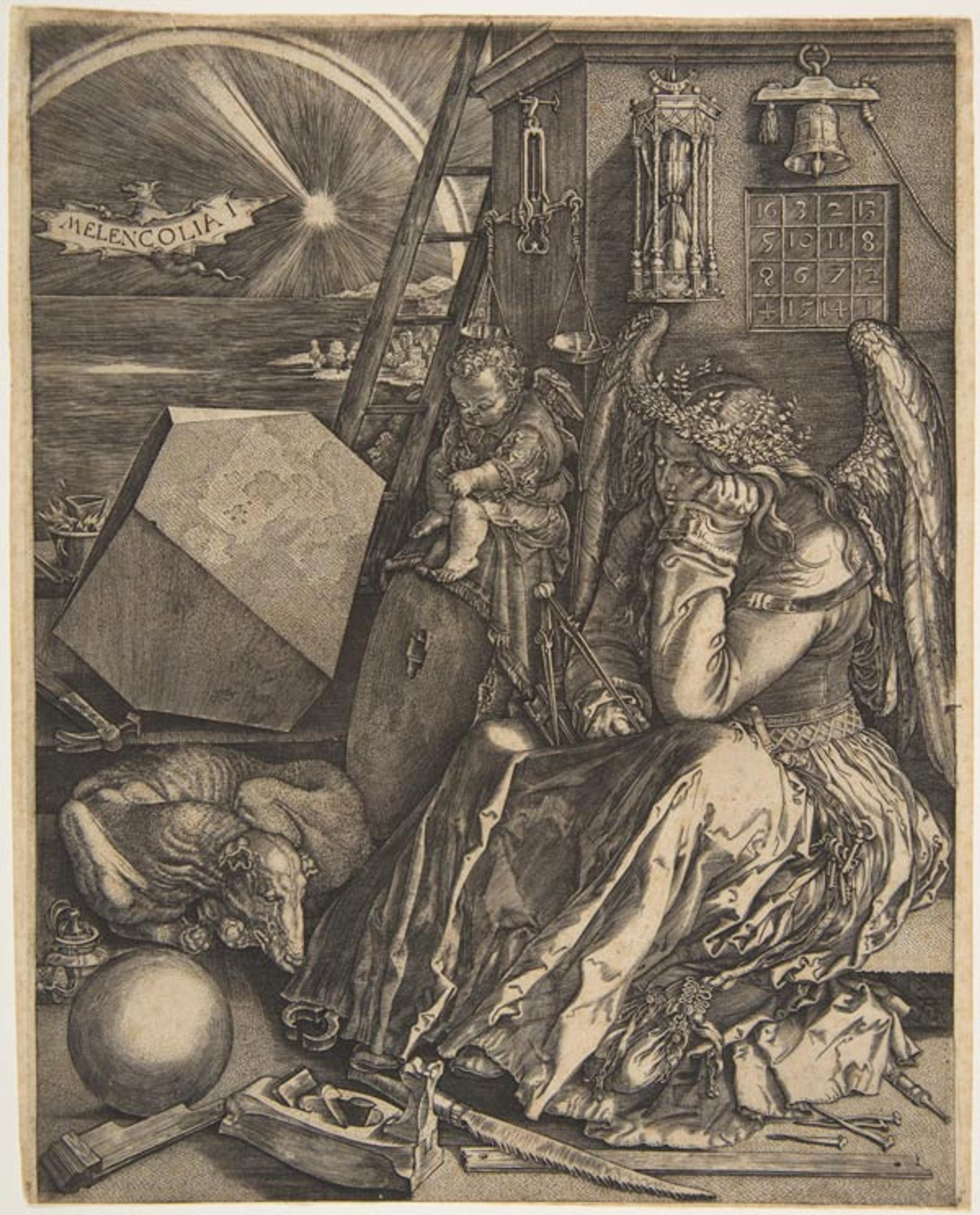
Jan (Johannes) Wierix (Netherlandish, 1549–1615), after Albrecht Dürer (German, 1471–1528). Melencolia I (copy), 1602. Engraving. The Metropolitan Museum of Art, New York, Bequest of Harry G. Friedman, 1965 (66.521.96)
Dürer, famous in his day, set a high bar for later engravers. Jan Wierix, active in the Netherlands almost a century later, created an exact copy of Melencolia. While Wierix had engraved copies of Dürer's prints as a teenager, he created this copy of Melencolia in adulthood, perhaps testing himself against his earlier accomplishments or perhaps as a way to make a profit selling remarkable copies of a famous print (he and his brothers had a reputation for spending all their money in taverns). Although the copy is remarkably faithful to the original nearly line for line, it appears more rigid in comparison, particularly in the rendering of the woman's face and the surface of the polyhedron.
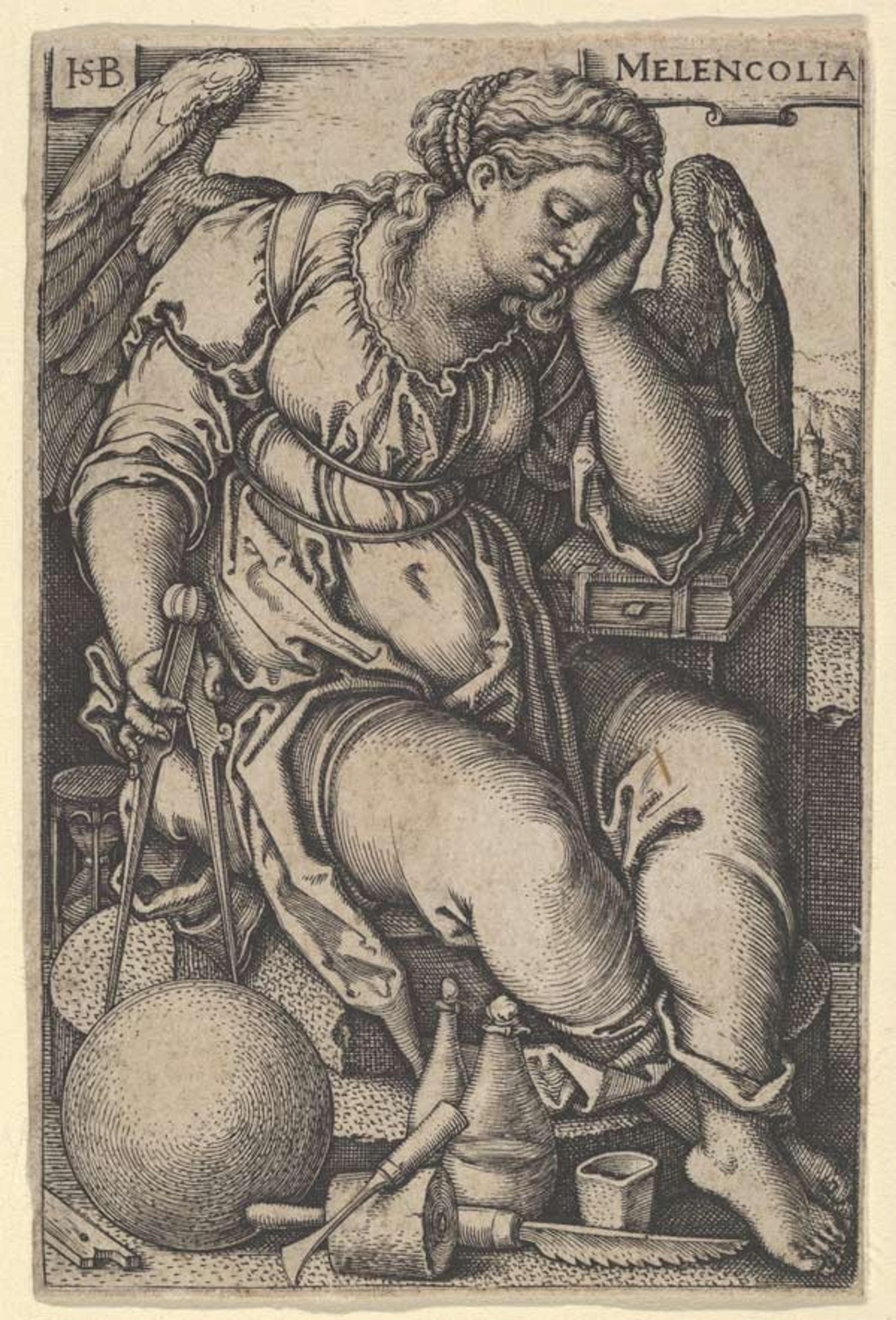
Sebald Beham (German, 1500–1550). Melancholia, 1539. Engraving. The Metropolitan Museum of Art, New York, The Elisha Whittelsey Collection, The Elisha Whittelsey Fund, 1966 (66.529.45)
Sebald Beham was one of the earliest artists to engage with Dürer's masterpiece. The German printmaker was one of a group of artists active around Dürer that were known as the Little Masters because they almost exclusively produced prints of a small size. Beham created a compact version of Melencolia focused on the allegorical figure, whom he depicts asleep. He eliminated some of the more mysterious details like the magic square and the polyhedron; what remains is the basic association of melancholy with ennui and aspiration.
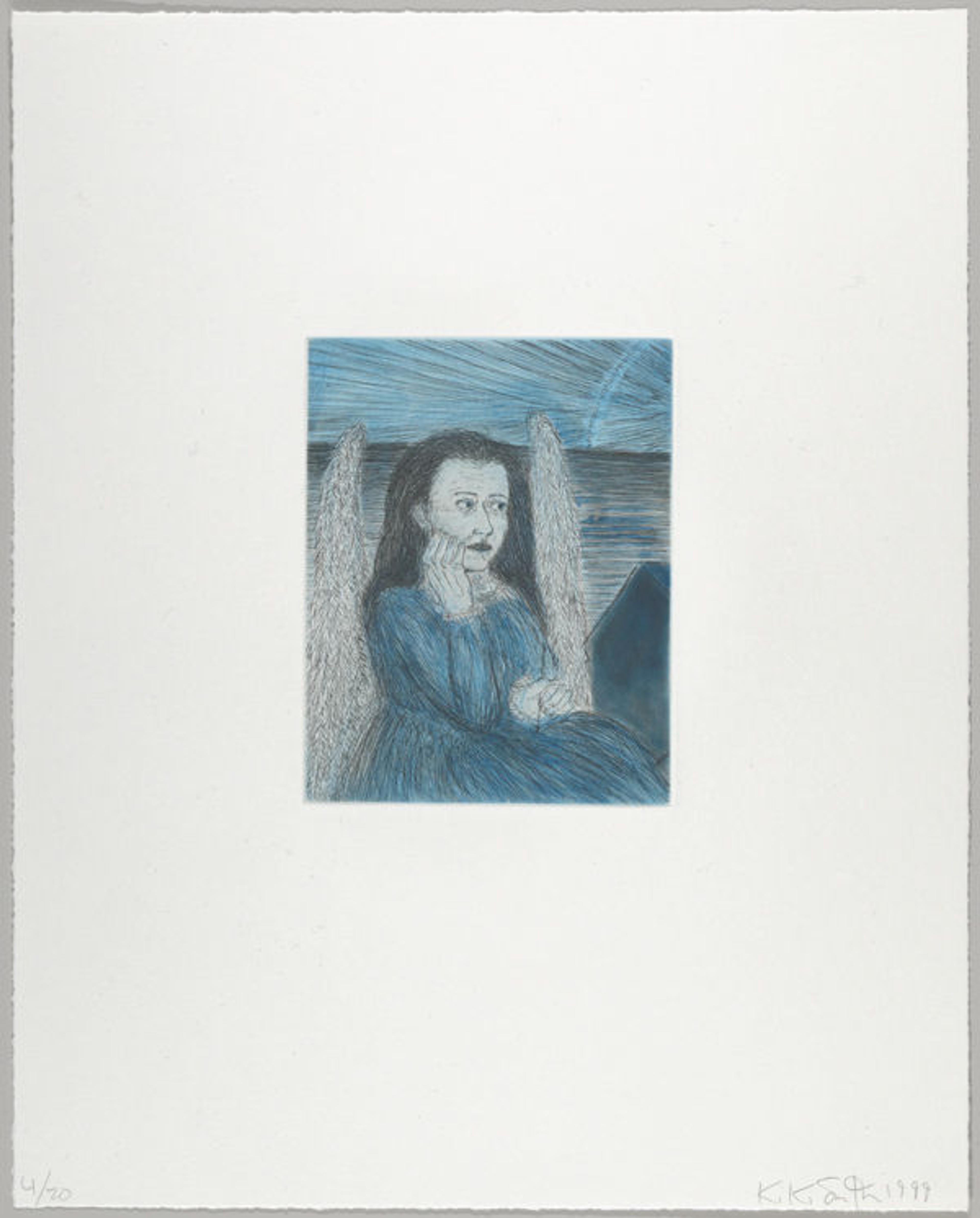
Kiki Smith (American, b. 1954). Melancholia, 1999. From the portfolio Blue Series. Color etching. Published by 13 Moons; printed by Harlan & Weaver, Inc. The Metropolitan Museum of Art, New York, Bequest of William S. Lieberman, 2005 (2007.49.547)
Dürer's print attracts artists to this day. Kiki Smith's etching belongs to a series of fifteen images of mostly young girls taken from literature, film, and art. This self-portrait shows a young artist embarking on her career. She appears melancholy and apprehensive for her future. Smith pared down Dürer's image to a minimum and replaced the caliper held by the main figure in the original with a printmaking tool.